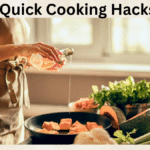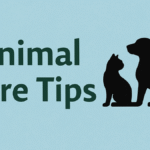Moldy Food Normally, if you see mold on your food, you would throw it away to avoid getting sick. That’s a reasonable thing to do because you don’t want to risk your health by eating contaminated food. However, there are certain types of food that you don’t need to throw away when you find mold on them. In these cases, you can remove the mold and still eat the food. Read on to learn more about this.
Also Read : Sleep Hack: Try This Easy Tip For Better Sleep

Throw Out
Let’s start with the most important point: certain foods should be thrown away if you see mold on them. When you come across moldy food, it’s crucial to check if the mold is only on the surface or if it has spread throughout the entire item. Here are some examples of foods that you should avoid eating if they have mold.
Also Read : Recognizing The Indications Of Parkinson’s Disease: A Compilation Of Symptoms
Cookies, Bread Or Pastries
Soft foods are prone to bacterial spread. If you see mold on your bread, it’s better to discard the entire loaf as it may be contaminated. The same applies to cookies and pastries, regardless of their deliciousness.
Also Read : How To Soften Butter Fast Without Melting It ?
Soft Fruits And Vegetables

Soft fruits like strawberries, grapes, kiwi, and berries can quickly spread bacteria, just like moldy bread.
Also Read : 5 Scalp Problems You Might Have
Dairy
If you see mold on your yogurt or if your milk doesn’t smell good anymore, you should get rid of it. It’s important to throw away certain kinds of cheese, cream, yogurt, and milk as soon as they become moldy.
Also Read : Why Chickpeas Are Super Healthy ?
Other Foods To Throw Out
Leftovers: If you leave your leftovers in the fridge for too long, they can develop mold. To avoid getting sick, it’s important to throw them away when this happens. Leftovers are a breeding ground for bacteria, and even a small amount of mold can contaminate the entire meal within a day. To prevent mold growth, it’s a good idea to freeze your leftovers as soon as possible.
Spreads like peanut butter and jam: When you open a jar of peanut butter or other spreads and spot mold, it’s best to discard the entire jar. This applies to spreads such as jam, apple sauce, or pesto as well.
Nuts and legumes: If you find mold on your nuts, it’s necessary to throw away the entire package. While it may seem wasteful, there’s a way to prevent this situation. Simply freeze your nuts and legumes, and they’ll stay fresh for up to two years.
What Can You Keep?
Some foods can still be eaten even if they have mold on them. You can simply remove the moldy parts or clean off the mold. Here are some examples of foods that you can still eat when they get moldy:
- Cheese: For hard cheeses, you can cut off the moldy part and the rest is safe to eat.
- Dried meats: You can brush off the mold from dried meats instead of cutting off pieces.
- Hard fruits and vegetables: Fruits like apples and carrots can be used for your meal after cutting away the moldy parts. Other examples include pears, bananas, mangoes, pineapples, melons, and citrus fruits like oranges. Just make sure to cut generously around the mold.
By following these tips, you can reduce food waste.
Also Refer : DISCOVER THE BEST FOODS TO EAT WHEN YOU’RE SICK
Source : Image : Unsplash





